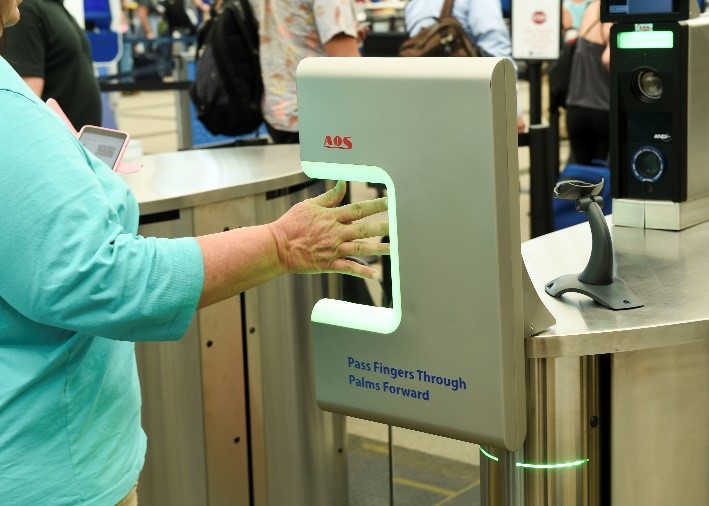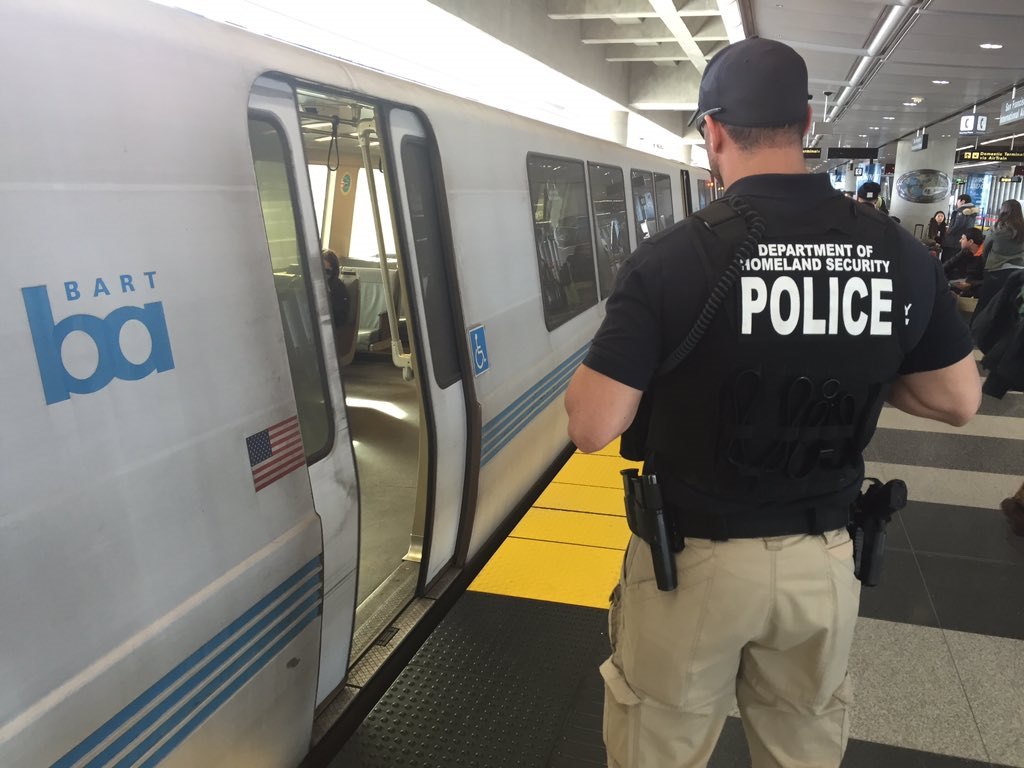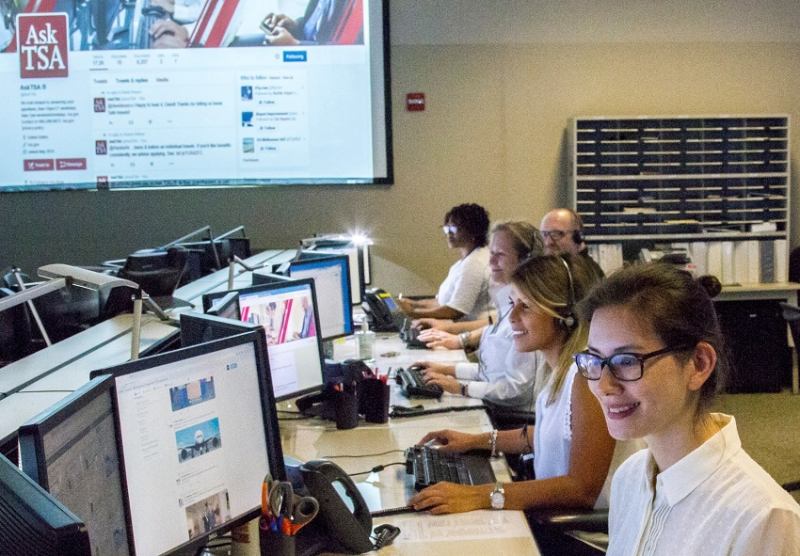By the TSA
At TSA, 2017 was marked not only by record traveling numbers – 771.5 million (771,556,886) passengers traveled securely through 440 federalized airports – but also by significant security enhancements in our nation’s transportation systems and at airports worldwide that helped keep the homeland secure.
Our record-breaking passenger numbers this year are a testament to the coordinated efforts between our industry partners and the hardworking men and women of TSA.
We know that aviation and transportation hubs remain high-value targets for terrorists, and that their modes and methods of attack are much more decentralized and opportunistic than ever before.
That is why, to stay ahead of the evolving threat, we spent much of 2017 adjusting our posture and becoming more agile, more creative, and more proactive.
We also maintained a keen focus on security effectiveness and made significant advances in our security capabilities, through innovative processes and technologies.
(Learn More. Former Homeland Security Secretary John Kelly discusses global aviation security measures regarding overseas airports that have direct flights to the United States. Courtesy of CNN and YouTube. Posted on Jun 28, 2017)
Raising the global baseline of aviation security
One of TSA’s most significant accomplishments in 2017 was our work – in partnership with airports, airlines, and international partners – to raise the global baseline of aviation security.
As a part of this ongoing effort, we enforced new critical security requirements for nearly 280 airports in more than 100 countries.
The measures, both seen and unseen, were phased in over time and included enhanced screening of electronic devices, additional passenger vetting and new measures designed to mitigate the potential threat of insider attacks.
These actions significantly improved the security of U.S.–bound flights, and ensured that every American made it home safe and sound.
In addition, TSA conducted 143 foreign airport assessments, 2,175 air carrier inspections, and 28 aviation security capacity development projects.
These projects provide aviation security training to foreign partners through a variety of courses in preventative security measures, crisis management, basic security, cargo security inspections, and train-the-trainer programs, among others.
(TSA has 20 integrated components, that we call the Layers of Security, working together to keep you secure . The layers are both seen and unseen and work like a very complex combination safe designed to keep our adversaries at bay and our transportation systems safe. Please take a few minutes to watch this video and learn more about what TSA is doing daily to keep you safe in the skies. Courtesy of the TSA and YouTube)
On the home front, we also rolled-out new security measures for carry-on baggage that require passengers to remove personal electronics larger than a cell phone from carry-on bags and place them in a bin with nothing on top or below.
These measures will continue to be rolled-out in the coming months to all federal airports nationwide.
As our enemies are adaptive, so we too must remain adaptive.
We continue to enhance our security posture with adjustments, new measures and with the help of emerging technology.
Advancements in technology
With the threat to aviation still a concern, developing the next generation of state-of-the-art technology is critically important.
Through our Innovation Task Force, in partnership with industry and private vendors, we accelerated our efforts to make advances in security technology.
In 2017, TSA continued to deploy automated screening lanes, which began as a partnership with airlines and airports in 2016.
The automated screening lanes are designed to improve the checkpoint screening process for travelers including the ability for multiple passengers to divest at the same time.
To date, there are over 100 lanes at 12 airports, with more scheduled for deployment this year.

TSA also remains focused on exploring biometric technology to automate the identification process.
Last year, TSA conducted a demonstration of biometric fingerprint technology in Atlanta and Denver.
This technology enables one’s fingerprints to serve as a boarding pass and ID. In addition, we conducted testing of Credential Authentication Technology at 10 airports last year and plan to expand the pilot to more airports this year.
This technology verifies the authenticity of a passenger’s photo ID and validates information from the ID against TSA’s Secure Flight vetting system.
As we analyze the results of our testing, we continue to look at biometrics as a way-forward in advancing security screening in aviation.
What’s more, TSA began testing Computed Tomography in Phoenix and Boston in June 2017.
Computed Tomography utilizes 3D-imaging and detection software to help TSA officers automatically identify threats, which may eliminate the need for passengers to remove liquids for carry-on passenger baggage screening.
We continue to test this technology for potential airport use in the future.
Driven by TSA’s Innovation Task Force, we are continuously reinventing and defining our security posture through innovation and exploration of new technology with the intent to always stay one step ahead of the enemy.
Surface transportation
There continues to be real threat to surface transportation, as we saw most recently in the New York City subway pipe bomb attack.

Terrorist groups are publishing instructions on how to build bombs and devices designed to evade airport security or to derail trains; laying out roadmaps for soft target and public area attacks; and calling for attacks on airports, passenger railroad stations, and inner city mass transit stations.
As you may know, TSA’s primary security focus in surface transportation systems is on oversight, cooperation, and regulation.
Of highlight, TSA conducted 281 voluntary security assessments for pipeline, mass transit and over-the-road bus entities and school bus districts to help raise the national security baseline.
These review programs analyze security standards and security programs for each system and identify opportunities to further enhance security.
In addition, TSA conducted 20 Intermodal Security Training and Exercise Program exercises with surface stakeholders to improve security readiness in our nation’s transportation network, including high-profile events such as the Presidential Inauguration, critical infrastructure including the Hudson River Tunnels, and regional multi-modal cyber security workshops.
These exercises provide planning tools and services to the transportation sector.
Public area security

In May 2017, TSA announced the first ever Public Area Security Summit National Framework, which is a set of recommendations jointly developed with industry, government, academic, international, and public officials, that enhances security in public spaces at airports and throughout the transportation system. Read the framework.
Public engagement
TSA’s social media presence continued to grow in 2017.
Our Instagram account has more than 840,000 followers and was one of five nominees for two prestigious Webby Awards next to the likes of Conan O’Brien and The Onion.
The main Twitter account shared 1,100 tweets, resulting in more than 31 million impressions and over 206,000 followers.
In November, TSA officially launched a Facebook page and broadcasted its first Ask Me Anything on Facebook Live with more than 5,000 views.
(In their first episode of our new “Ask Me Anything” series, TSA’s “Blogger Bob” Burns discusses how the agency uses Instagram to communicate with the traveling public. Originally broadcast via Facebook Live on December 18, 2017. Courtesy of the TSA and YouTube)
Through AskTSA, we continued our commitment to customer service by helping passengers in real-time, 365 days a year.
TSA received more than:

- 316,000 questions from the traveling public via its AskTSA Twitter and Facebook Messenger accounts
- including more than 85,000 inquiries related to permitted and prohibited items,
- 14,000 known traveler number issues to ensure passengers received TSA Pre✓®, and
- 8,600 inquiries to help passengers with disabilities and medical conditions with the security screening process
Although I have only been on the job since August 2017, I have been impressed by the dedication and commitment of the men and women of TSA, from those who work behind the scenes and out of public view, to those who protect millions of people every day at airport security checkpoints, onboard aircraft, and in our surface transportation venues.
I look forward to continuing to protect our homeland and to serve you.
David Pekoske, TSA Administrator
Learn More…
Terror Concerns Prompt New TSA Cargo Restrictions (Multi-Video)

















